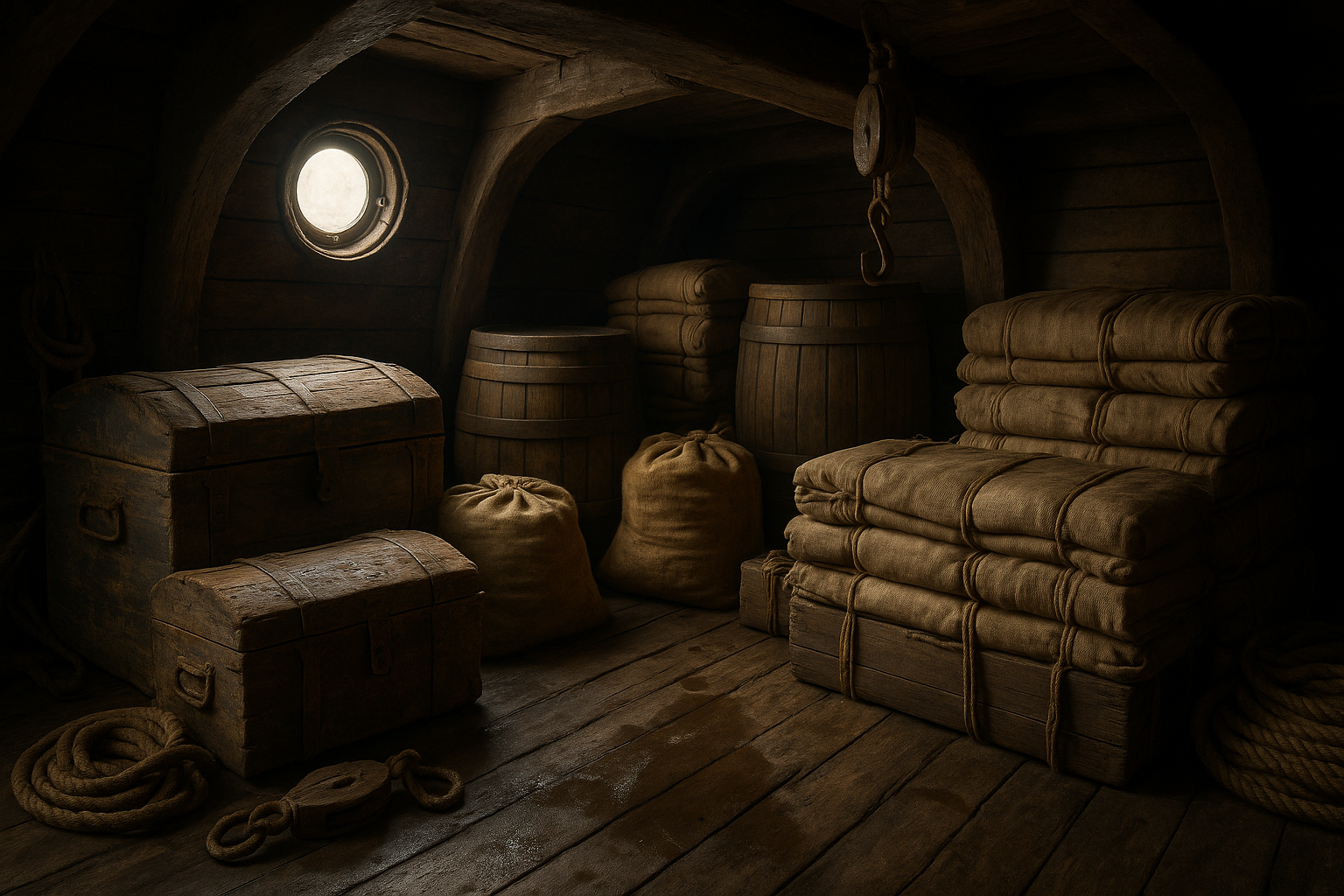In the vast tapestry of global history, few threads are as intricately woven into the fabric of our modern world as the legacy of colonial commerce. 🌍 The haunting echoes of this era, often shrouded in mystery and neglect, continue to shape economies, cultures, and societies today. The story of how goods, people, and power traversed the seas is not just a tale of trade but a saga of transformation, resistance, and profound impact. As we delve into the depths of this history, we aim to uncover the colonial cargo that has, quite literally, sailed through the ages and into our lives.
Imagine the bustling ports of the 17th and 18th centuries, where the air was thick with the scent of spices, tobacco, and the unyielding sea. Ships, laden with treasures and tragedies alike, embarked on journeys that would redefine continents. These voyages were not mere exchanges of goods; they were the conduits of cultural exchange, exploitation, and expansion. The ghosts of these ships and their cargoes still linger, reminding us of a past that is never truly past.
At the heart of our exploration lies the complex web of trade routes that spanned the globe. From the sugar plantations of the Caribbean to the opium fields of Asia, colonial powers extracted immense wealth from their dominions, often at a dire human cost. This history is not just about the commodities exchanged but also about the lives intertwined with these trades. Every artifact, every shipment, carries stories of struggle, survival, and sometimes, resilience.
As we navigate through this rich history, we will explore the following key themes:
The Rise and Reach of Colonial Empires
How did small European nations manage to exert control over vast territories across the globe? 🤔 The answer lies in their strategic exploitation of resources and trade networks. By establishing colonies, these empires could harness local resources and labor, feeding the insatiable appetites of burgeoning European markets. We’ll examine the mechanisms of power that allowed empires to flourish and how these same mechanisms sowed the seeds of resistance and revolt.
The Human Cost of Commerce
Behind the glittering façade of prosperity lay a darker reality. The transatlantic slave trade, for instance, was a brutal business that displaced millions and decimated cultures. We’ll delve into the human stories behind the numbers, exploring how colonial commerce perpetuated systems of oppression and inequality that resonate to this day. These stories are crucial for understanding the full impact of colonial trade on both the colonized and the colonizers.
Cultural Exchanges and Influences
Colonial trade wasn’t just about goods; it was also about ideas, languages, and customs. As ships sailed from port to port, they carried more than merchandise; they transported culture. This exchange led to a rich tapestry of influences, visible in everything from food and fashion to language and religion. We’ll explore how this cultural intermingling has shaped modern societies and continues to influence our world today.
The Environmental Impact
The relentless pursuit of profit also took a toll on the environment. 🌿 From deforestation to the introduction of non-native species, the environmental legacy of colonial commerce is profound. We’ll examine how these practices have led to long-term ecological changes and what lessons we can learn as we face modern environmental challenges.
As we journey through these topics, our goal is to illuminate the enduring legacy of colonial commerce. By uncovering the stories of the past, we hope to provide a deeper understanding of how they inform our present and influence our future. This exploration is not just an academic exercise; it’s a necessary reflection on the forces that have shaped, and continue to shape, our world.
Join us as we uncover the colonial cargo that has navigated through history, leaving an indelible mark on the world. The past is a powerful lens through which we can view the present and envision a future that acknowledges and learns from these lessons of history. Anchors aweigh, as we set sail on this journey of discovery and understanding. ⛵

Conclusion
As we conclude our exploration of colonial cargo and its role in shaping global commerce, it’s clear that the rise of international trade was deeply intertwined with exploitation, displacement, and inequality. Beneath the wealth and expansion of empires lay a network of forced labor, cultural erasure, and human suffering that fueled the modern global economy.
The true lesson of colonial cargo lies in acknowledging both its innovation and its injustice. 🕊️💡 The same ships that carried spices, textiles, and metals also transported enslaved peoples and extracted resources that reshaped entire continents. Ultimately, confronting this dark past is more than an act of remembrance — it’s a call to rebuild global trade on principles of equity, accountability, and shared humanity.
Gabriel is a visual storyteller and archival artist whose lens dives deep into the submerged echoes of underwater archaeology. Through sediment and salt, Gabriel traces forgotten histories — those whispered by shipwrecks, eroded artifacts, and drowned cities.
Compelled by the allure of ancient trade routes, submerged sanctuaries, and the ocean’s quiet possession of the past, Gabriel’s work charts a poetic cartography of the sea’s memory. From coral-laced amphorae to oxidized anchors, every object he illuminates becomes part of a narrative where time collapses and the past drifts close.
His creations are more than documentation — they are visual meditations on absence and endurance. Gabriel blends design, historical research, and storytelling to surface the quiet resilience of maritime remnants. He captures the textures of time: rust that blooms like algae, stone that crumbles into myth, and silence that speaks louder than ruin.
Through curated imagery, thoughtful essays, and reconstructed impressions of what lies beneath, Gabriel invites viewers to see underwater ruins not as remnants, but as thresholds to wonder — places where memory is refracted through water, and where myth lingers like salt on stone.
His practice is a tribute to:
The unknowable depths of civilizations consumed by tides
The fragile endurance of objects left behind
The enduring dialogue between water, stone, and remembrance
If your soul drifts toward the relics of lost maritime empires, the mythic pull of coastal rituals, or the ghostly grace of sunken vessels, Gabriel welcomes you to descend into a space where history sleeps in sediment — but dreams in currents.




